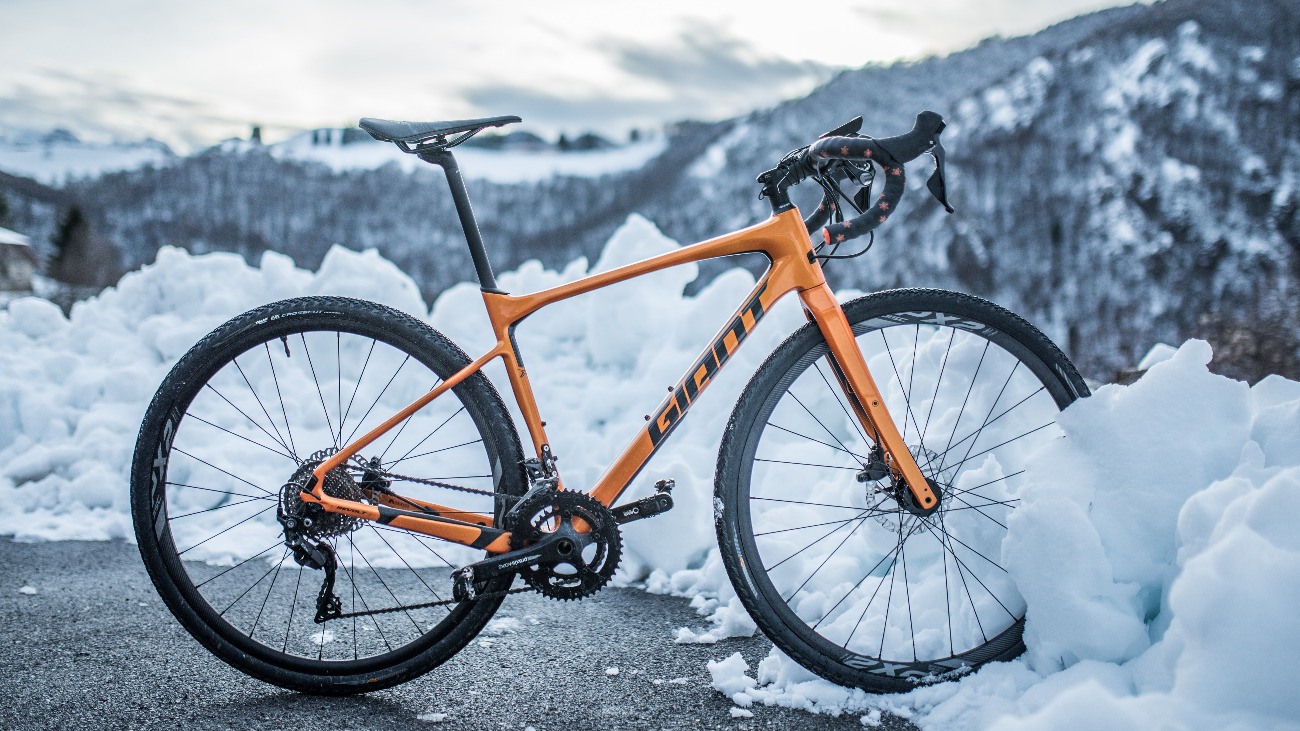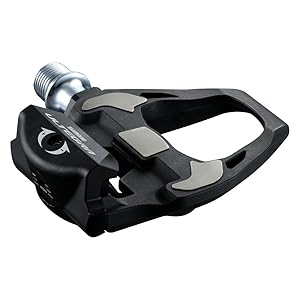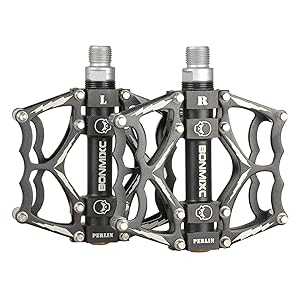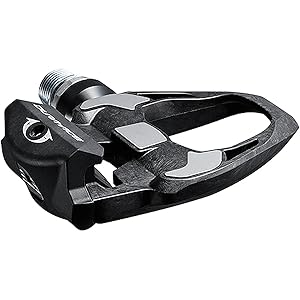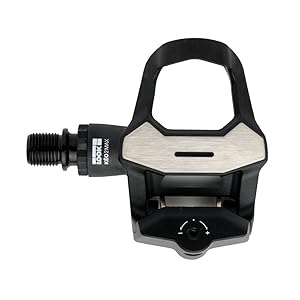When you’re looking for the best riding experience on the road, you may not think too much about the pedals you’re using. They wouldn’t be the first thing that comes to mind when considering how to improve your riding experience.
Yet we’ve all had the feeling of sensing a foot slipping off the pedals – and the impact into the handlebars that often follows.
The best road bike pedals can help avoid this, and we’ve ferreted out some of the best ones on the market just for you. Good quality road bike pedals help you stay safe rather than raising the potential of an accident.
The Best Road Bike Pedals
What makes some bike pedals better than others? If you are still using the ones that came with your bike, there is a good chance they’re not ideal for your needs. Unless your bike cost a small fortune, you can likely do better. There are many sets on the market from many brands, but we’d suggest choosing a brand with a proven track record of reliability. Check out the following suggestions, which include some of the best road cycling pedals on the market today.
Shimano Ultegra PD-R8000 Road Bike Pedals
This smart Shimano pedal comes in one universal size and uses the SPD-SL system, so you’ll need the right shoes to get the most from it.
Offering a smart black finish, the pedal is designed to withstand heavy use and is highly rated by previous buyers. The spindle is made from tough chromoly steel, while the material portion of the pedal is made from carbon composite. This keeps the pedal nice and light while still giving a tough finish and performance.
The sizeable area for clipping into the pedal when you start off also makes it easier and more convenient to use.
Shimano PD-M324 SPD Dual Platform Road Bike Pedal
If you would rather invest in a multipurpose cycling pedal, this one-sized set of pedals from Shimano ticks that box.
The combination pedal features an SPD clip interface on one side, while providing a standard platform finish on the other. This makes it perfect for occasions where you are wearing trainers or shoes and for occasions when you’re wearing your cycling shoes.
Weighing in at a little over 1lb for the pair, the dual platform pedals are made from sturdy aluminium with a smart barrel finish. They also feature a cleat retention adjuster facility.
BONMIXC Sealed Bearing Road Bike Pedals
The almost skeletal look of this BONMIXC set of road bike pedals is eye-catching indeed. Available in black, red, and blue colour options, each pedal boasts a durable finish to keep its good looks for longer.
The set of pedals offers a fully enclosed design to protect the bearings inside. This offers greater performance over a longer period. The ultra-wide pedals are designed for comfort across a range of bikes.
There is no need for special shoes with these pedals; they feature anti-skid nails on both sides to ensure your feet always stay put on the pedals when you need them to.
Shimano Dura-Ace 9100 Road Bike Pedal
Available for a 4mm axle or in regular size, this Dura-Ace model is one of the more expensive options from trusted brand Shimano.
They incorporate the SPD-SL system, with adjustable tension provided for smoother entry and release when required. The pedals have been constructed with a carbon composite body coupled with a stainless steel body plate.
Together, the materials provide a strong and robust finish that is built to last. The 4mm option gives you greater versatility upon purchase, especially if standard pedals don’t quite suit your build.
Look KEO 2 Max Road Bike Pedal
This click-style pedal is designed to work in conjunction with the Look system, so make sure you have compatible shoes prior to purchase.
The striking design comes with a surprisingly affordable price, especially given the lightweight finish. Each pedal weighs in at a nominal 130 grams. The graphite pedals use a carbon injection process to keep the weight down, while providing stainless steel areas for the feet to make quick and easy contact with the cleat system.
The pedals also provide a greater surface contact area for comfort.
Our Guide To Buying the Best Road Bike Pedals

If you’re after a new set of road bicycle pedals, there are several points to go over before you lay down your cash or part with your credit card details online. We’ve covered the main areas to think about below. Make sure you review them all before you start shopping.
How heavy are the pedals?
The heavier you and your bike are, the more weight you’ve got to push along as you ride. While the weight of your pedals isn’t the biggest thing you can change (emptying out that bicycle backpack makes a far bigger difference, for example), it can influence your choice.
In truth, the weight isn’t going to matter much to the average road rider. However, it is another element to consider, and could prove the decisive factor if all else is equal.
How wide are the pedals?
A wider pedal will spread the load you place on it as you get moving from a standing start, maybe at traffic lights, or increase your speed as you cycle along. It also feels far more comfortable underfoot than a smaller pedal. You want to be sure every ounce of power generated by your feet and legs goes into the pedals, so it can be transferred to the wheels.
Think about the surface area of the pedals too. This is more important if you’re not looking for SPD or SPD-SL pedals (more about those terms shortly). You don’t want your feet to slide off the pedals as this loses power and could lead to an accident. Some pedals feature anti-skid nubs or nails on them to prevent this from happening. Don’t worry, the nails aren’t sharp enough to cause you injury if you touch them, but they do help keep your shoes in place.
Are they easy to maintain?

Pedals go through a lot. You want robust pedals that won’t need much maintenance. Some are provided as sealed units, so no dirt, mud, or water can get into them. That is important when there are bearings inside that could fail if they take a beating.
That said, you might prefer more open pedals, so you can oil any moving parts whenever necessary. A lot depends on the design. One Shimano design we encountered was created to shed mud from the pedals without much effort, for example.
Should you get SPD pedals or SPD-SL pedals?
Huh? What’s that all about? You may be familiar with these terms already in which case you probably already know which ones you should buy. If not, keep reading because we can help you make the best decision for you. Note that we say the best decision rather than the right one. One rider can decide to choose the opposite of another and they’ll both be delighted with their purchase. Horses for courses (or riders for bikes, in this case).
If you’re new to these terms, here’s what they mean:
- SPD stands for Shimano Pedaling Dynamics
- SPD-SL stands for Shimano Pedaling Dynamics Spring Loaded
Each refers to a system introduced by Shimano, a brand that specialises in pedals and other bike parts. Regardless of which system you go for, you’ll need to buy the right shoes to fit with that system. The SPD pedals are ready to receive shoes with two bolts fitted to the underside. In this case, the bolts are inside a recess, so you can still walk comfortably in the shoes when you’re not cycling.
The SPD-SL pedals rely on a three-bolt system. It works in much the same way as the above option, except this time the bolts stick out from the shoe. If you are not intending to walk anywhere in those cycling shoes, you’ll be fine. On the other hand (or foot), if you don’t want to look like a baby taking its first steps in front of everyone at the office, go for the original SPD system and a Shimano pedal to suit. Alternatively, choose another type of bicycle pedal designed for road biking. We’ll come to those shortly.
We should point out that these bolts are also referred to as clips. And to make life a little more confusing for the uninitiated, the pedals are also referred to as clipless pedals… even though they use clips. Who knew buying road bike pedals was going to be so interesting, hmm?
Bottom line – know what you are buying and why you are buying it. If you want proper cycling shoes along with your new pedals, go for the SPD system. If you want to keep costs down, opt for a set of bike pedals that will tick the other boxes without requiring you to buy new shoes as well. If you already have a set of shoes, make sure you get new pedals to fit them.
Would combo or hybrid pedals be a better option?
If you don’t yet have clipless shoes but you’re thinking of investing in some in the future, you could opt for hybrid pedals instead. This means one side of each pedal has the clipless system in place and the other is a basic flat pedal. You simply need to be sure you buy the pedal with the clipless system you’d prefer (two or three bolts). You also need to be sure you set off on your bike using the right side of the pedals each time.
But for a two-for-one design, it does make a lot of sense to take this route if you know you are going to invest in some cycling shoes soon – or if you only occasionally wear them now.
Speaking of price…
As with most things, the pedals we have reviewed here range from the easily affordable to the rather expensive. Of course, quality and design are going to vary too. You can spend a huge amount on a set of road biking pedals, but do you really need to? Even the SPD pedals (tending to be among the more expensive options) can be purchased at several price points. Fortunately, there is something for every road cyclist to consider.
Conclusion
It makes sense that shoes would be an important consideration when thinking about buying new pedals for a road bike. Knowing what you are going to wear gives you the ideal starting point when looking at the options. Fortunately, all good bicycle pedals should fit all bikes, so you shouldn’t go through the experience of buying a set and finding it doesn’t fit your bike.
From there, your budget could well influence which set of bicycle pedals you invest in. You’ll pay more for good quality pedals, but they are likely to last longer and be more pleasant to use. All good things to bear in mind.
